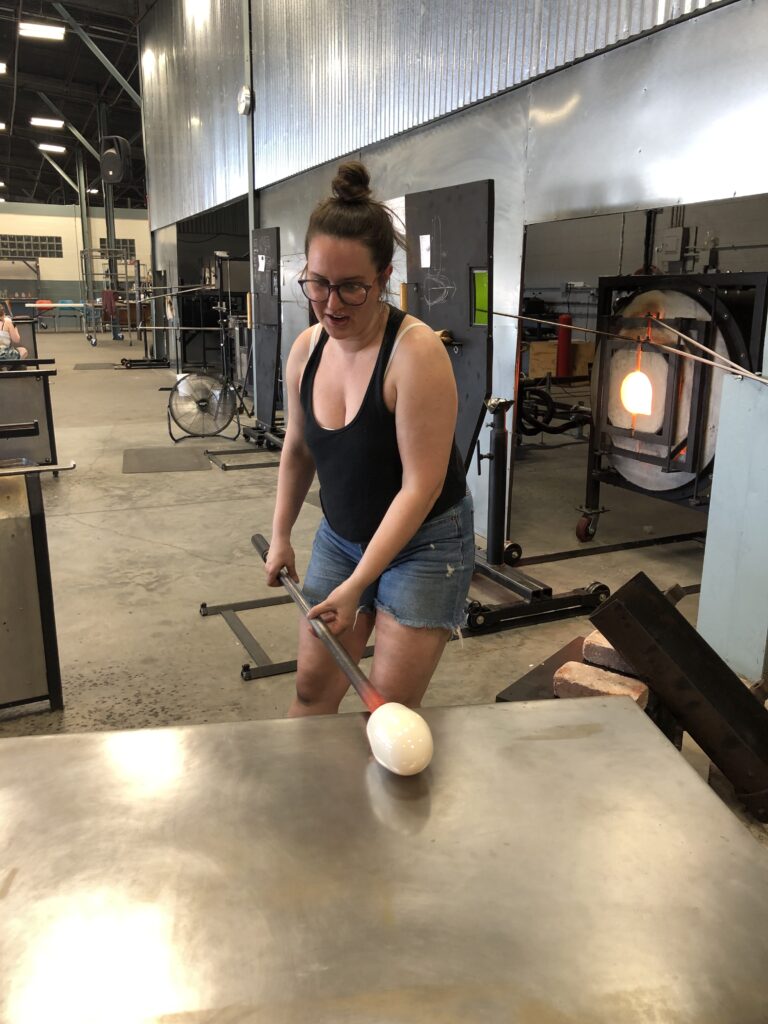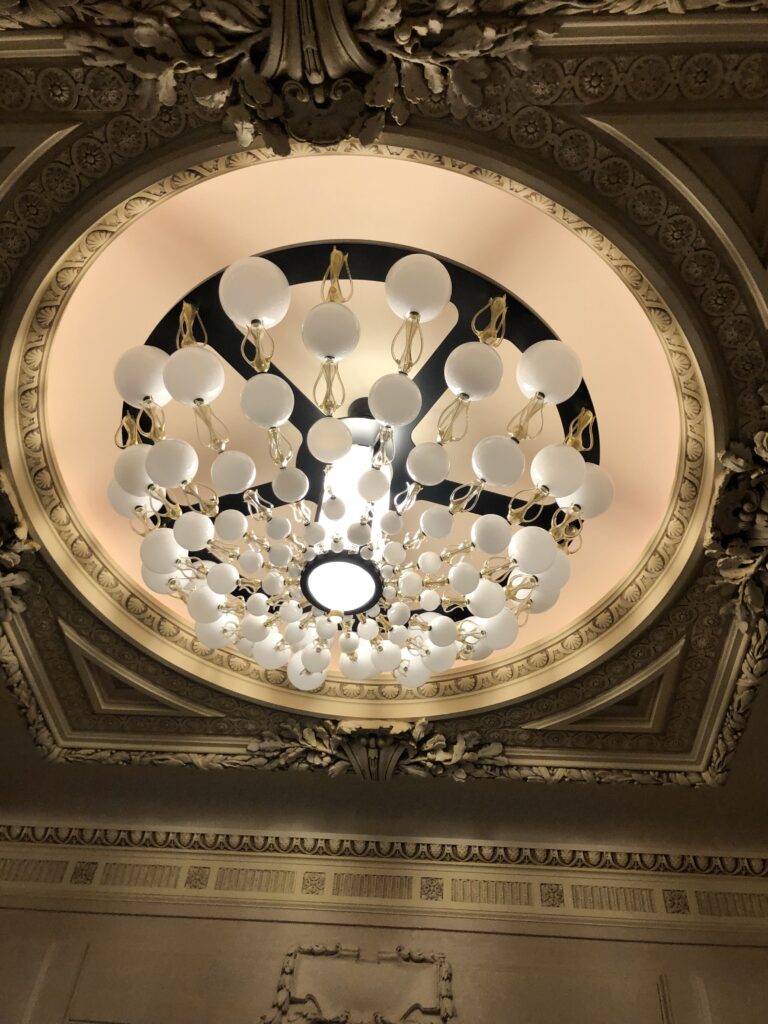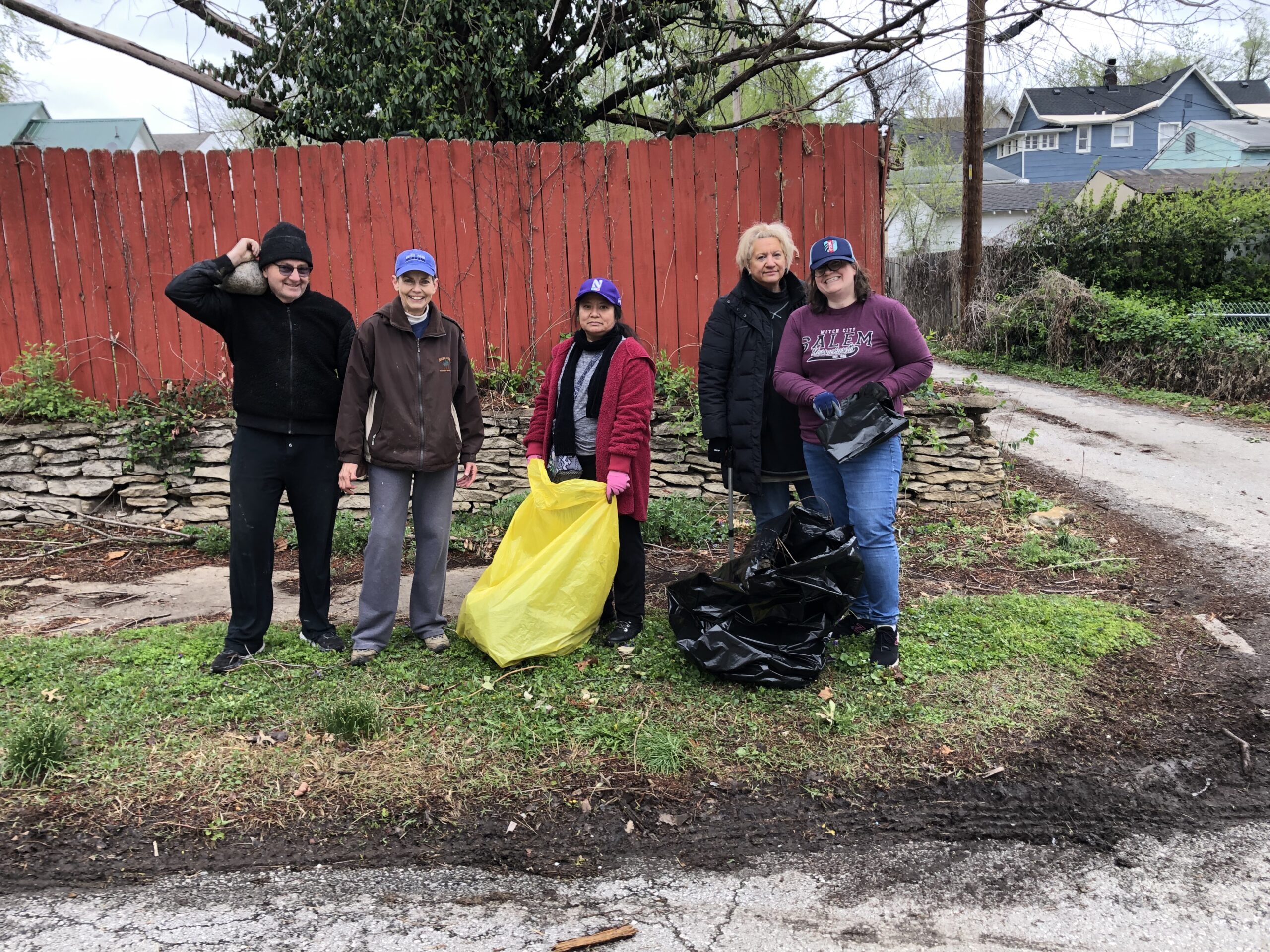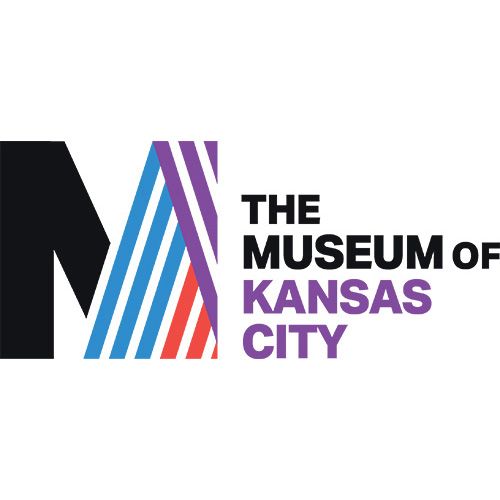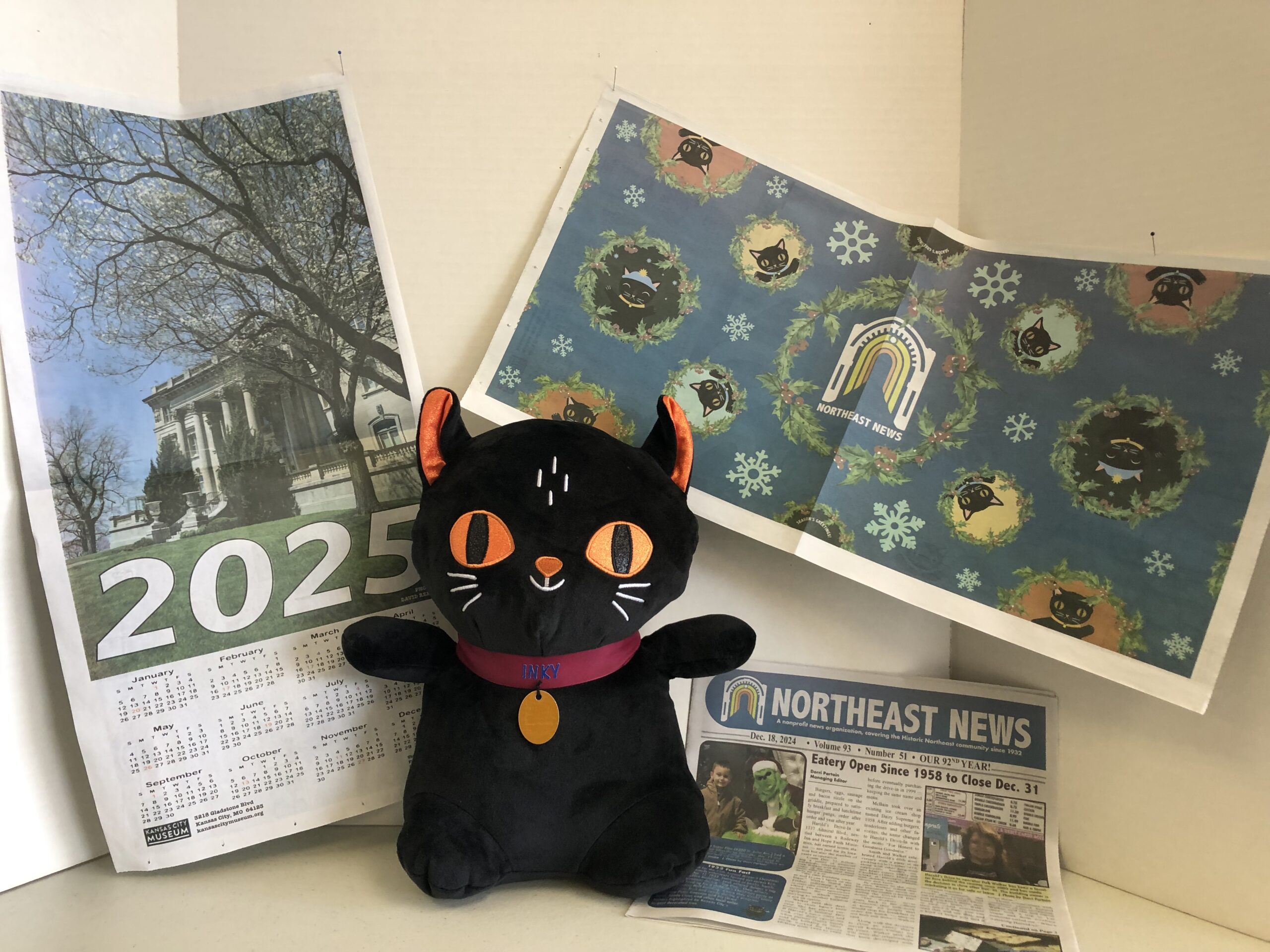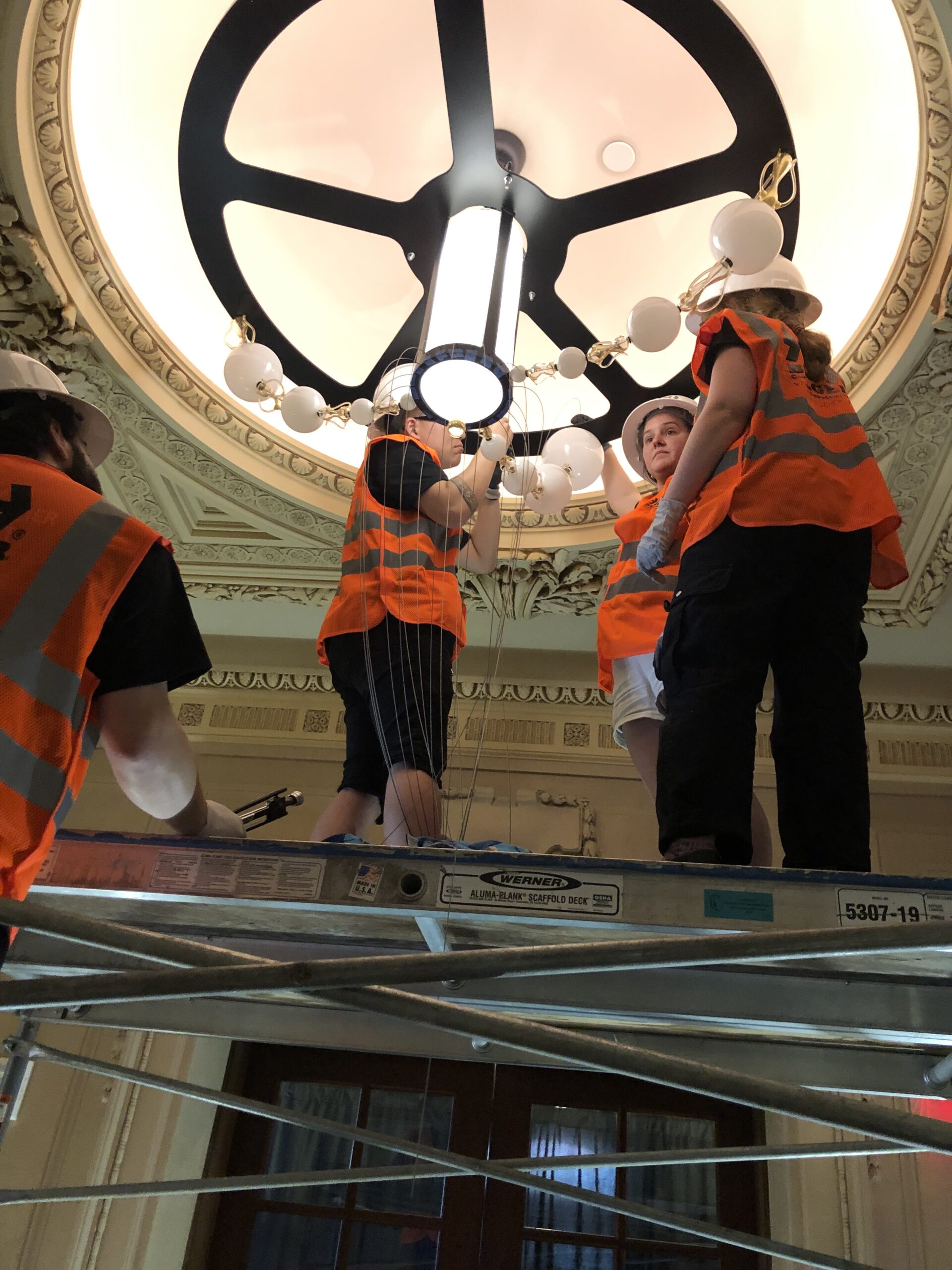
Dorri Partain
Assistant Editor
Designed to complement original lighting fixtures crafted by European artisans over a century ago, a new chandelier has been locally fabricated and installed at the Kansas City Museum at Corinthian Hall, 3218 Gladstone Boulevard.
In conjunction with Belger Arts Glass Annex, a team of nine glass artisans began the process of creating all the components earlier this month. The fabrication sessions were open to the public at the studio at 1219 E. 19th St. to view and learn as each piece was crafted to the design’s specifications.
In addition to gallery space, the annex houses three furnaces which the team members alternately utilized as they heated and molded each complex component of various sizes according to the design. According to Tyler Kimball, glass principal and gaffer with Monarch Glass Studio, the chandelier’s design was tweaked until the components came within the 170 pound weight limit for installation.
The number of components, each individually crafted one by one, total 161 pieces, plus extras to compensate for breakage during construction, installation, and future maintenance. White “milk glass” globes of various diameters are interspersed with clear glass finials highlighted by gold leaf, cascading around a large central cylindrical centerpiece that will house the lighting element. The globes and finials are strung together with stainless steel airline cable and housed in a laser-cut aluminum frame.
“We’re using $1200.00 of 14 carat gold leaf. No corners were cut, as we’re trying to emulate design elements original to the home when it was built, when artisans from around the world built those specific details,” explained Kimball.
Corinthian Hall was built by lumber baron Robert A. Long and served as his family’s home from 1910 to 1934. His daughters Sallie and Loula donated the home to the city following the elder Long’s death in 1939 and the grand mansion became the Kansas City Museum a year later.
During the fabrication process, three team leaders (gaffers) are assisted by six assistants chosen during a call for artists last fall. As each piece is shaped, calipers are used to determine the correct measurements. While some artists work on smaller components individually, the larger pieces require a team effort to help spin and shape the glass to the correct thickness and size.
Katie Hogan, manager for the Belger Glass Annex, explained that while each piece is required to fit certain specifications, there is also a variation to each piece, which is just part of the fabrication process.. While not involved in this specific project, Hogan is an experienced glass artisan and was on hand to answer questions from visitors to the studio.
As each piece was completed, they were laid out on towels to cool, then sorted for size. Depending on the size and complexity of the piece, it can take a skilled artisan over an hour to complete.
The team began production on May 3 and had produced all the components, plus extras, during five working days. To ensure the best quality, the central cylindrical component was fabricated five times; the extras produced will be stored at the museum. To prepare for installation on May 10, the team spent hours sorting, numbering, wrapping and packing all the components to transport to the museum.
On installation day, the team converged at the museum with all the materials they had produced. Donning safety vests and hard hats, they scaled the scaffolding set up in the museum’s west vestibule to install the chandelier’s frame and string the components on the attached cables. The process was repeated until each of the twenty strands of eight components was attached and secured to the frame.
The new chandelier is titled “Kansas City Glow”, a name selected during a collaborative process by Belger Arts and the museum. According to the museum’s Executive Director, Anna Marie Tutura, the previous light fixture in the west vestibule was installed during the 1970’s and will be stored until its history can be documented by museum staff.
As the project drew toward completion, team gaffer Jacqueline Polofka reflected on working with team members from across the midwest that came together for the project. “It was pretty unusual to complete in a week, we worked 9 to 5 each day,” she said, adding, “Whether it was technical advice, or personal, we all got something from the experience.”
Polofka traveled to Kansas City from her studio in Ohio to participate.
Consuelo Cruz, Belger Arts Center’s Vice President of Marketing and Community Engagement, stated that education was the mission of the collaboration with the museum, which led to bringing in a team of artists with different experiences and backgrounds to Kansas City.
The museum held an unveiling for Kansas City Glow on the evening of May 10 to showcase the efforts of the team. A plaque listing all the names will accompany their work, as follows:
Gaffers – Tess Healy, Jacqueline Polofka, and Hoseok Youn
Assistants – Yana Artemov, Michael Carson, Claire Coffee, Olivia Dobkin, Jessalyn Mailoa, and Kiani Simms
The chandelier is located in the west vestibule, where the entrance to the salon, the library and the west staircase converge and is visible during regular museum hours.




